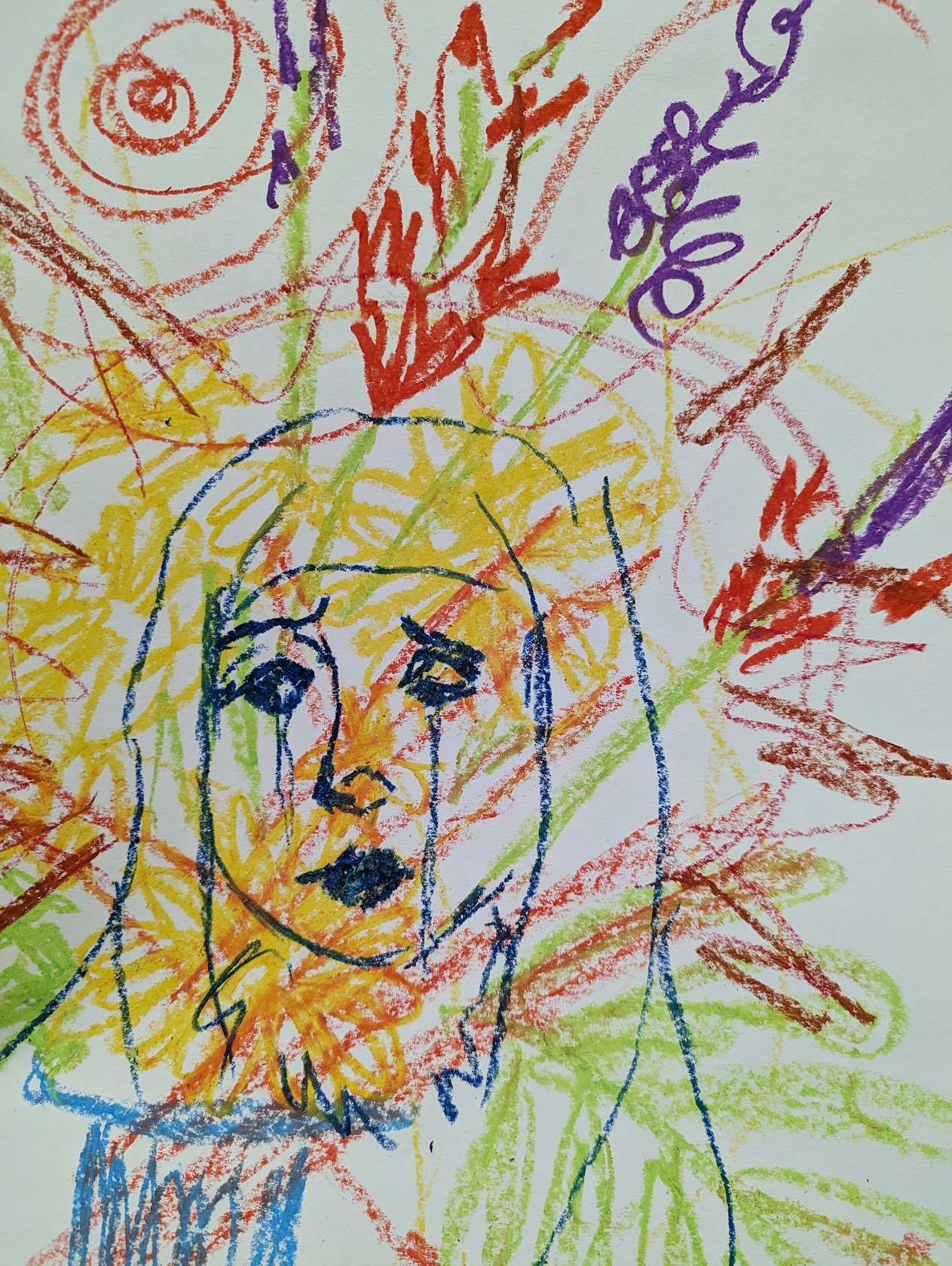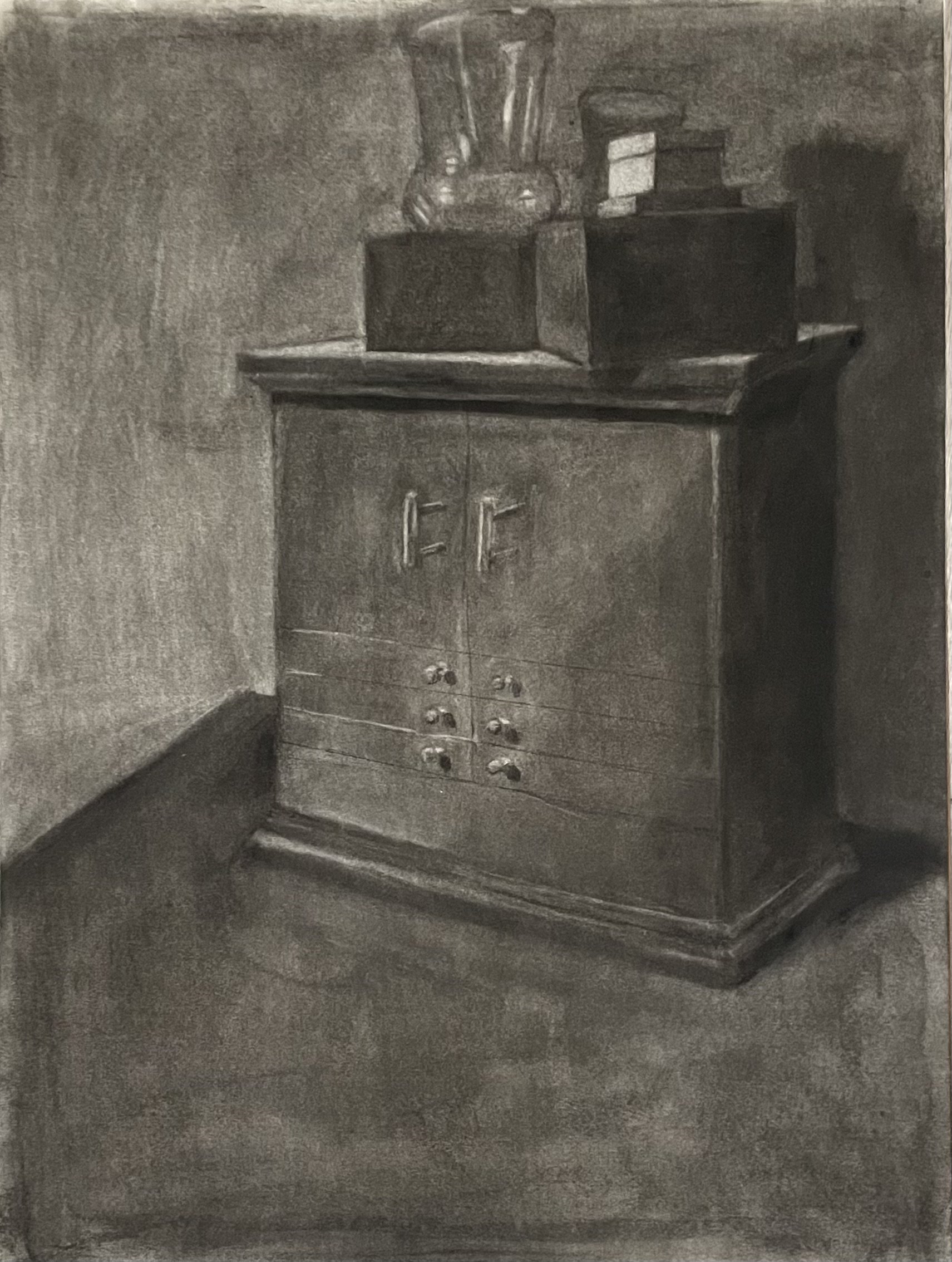
Projects and Syllabi
Intro to Painting
This is a undegraduate introductory-level course for beginner painters. As such, they explored concepts such as texture, lighting, observational studies, composition, and much more.
Students became familiar with art terminology, the qualities of paint, mediums, color mixing, basic color theory, paint application, and various painting materials. This class allows students to build their skill level through studio practice and assignments.
Master Copy Project
For this project, students selected a “master” painting to copy. The purpose of this project is for the students to do research and to then pick an artist they admire and then try to replicate how they paint so that we can learn new techniques and skills. By copying the artists, we observed how they successfully shade, highlight, compose, sketch, etc. The master copy that the students replicated should do their best to copy the artist’s techniques, mediums, colors, and composition.
The students could pick any painting they wanted, but I expected them to challenge themselves and try to pick a painting that they could learn from.
Examples that students chose to copy were Lady With the Pearl Earring by Johannes Vermeer, Saturn Devouring His Son by Goya, and Lady with a Fan by Gustav Klimt.
Self-Portrait Project
This project required the students to create a self-portrait based on what they had learned throughout the semester. The self-portrait could be abstract, realistic, or surreal - as long as the student explained why they chose that particular art style. Throughout the semester the students learned how to approach different colors, composition, and subject matter and for this final project, I asked that they explore what they were most interested in and create a self-portrait that felt truly like them.
Before starting the project we researched artists like Frida Kahlo, Elisabeth le Brun, Milos Reindl, and Pablo Picasso for inspiration.
Intro to Drawing
This undergraduate course provides a foundation for drawing as a two-dimensional process of representation and experimentation with visual languages. In learning fundamental drawing practices and gaining familiarity with various tools, materials, and techniques, students explore a range of approaches to understanding the correspondence between what they draw and what they see, think, and imagine.
By introducing students to significant examples of contemporary art, the course enables them to progress toward developing an individual drawing language. Concepts about rendering, touch, gesture, mark, movement, surface, content, and purpose are explored.
Drawing by Erasing Project
This project requires the students to subtract from a drawing rather than add. Students learn to focus on light sources in a drawing by erasing the highlights and creating depth and value with subtraction. This project helps introduce students to new materials and experiment with a new way of drawing. For subject matter, the students were to pick out a part of their house they passed by daily and pick an angle from it to draw from.
There is a heavy focus in this project on light source, value, and subject matter.
Repetitive Drawing Process
This project’s purpose is for students to focus on the tiny details in objects and all their textures. Students chose an object they were interested in drawing and then were tasked with drawing that same object six different times from six different angles. The project was designed for student’s to begin to learn how to draw from life with simple objects and to slowly start building their confidence with new drawing mediums.























